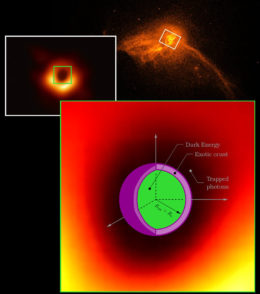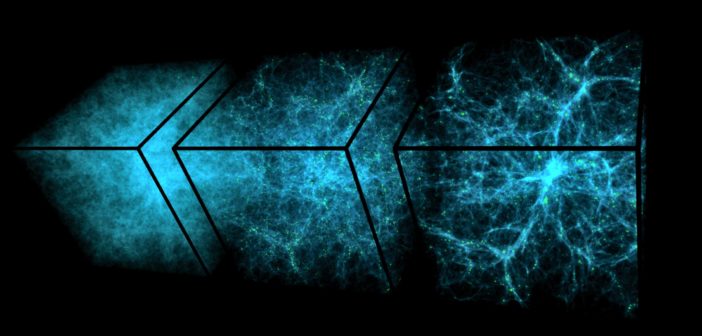Editor’s note: In these last two weeks of 2020, we’ll be looking at a few selections that we haven’t yet discussed on AAS Nova from among the most-downloaded papers published in AAS journals this year. The usual posting schedule will resume in January.
Implications of Symmetry and Pressure in Friedmann Cosmology. III. Point Sources of Dark Energy that Tend toward Uniformity
Published September 2020
Main takeaway:
A study led by Kevin Croker (University of Hawai’i at Mānoa) explores the possibility that the first generation of massive stars in the universe — Population III stars — collapsed at the end of their lives not into black holes, but instead into GEneric Objects of Dark Energy (GEODEs). These point sources of dark energy, distributed between galaxies, would explain the universe’s accelerating expansion.
Why it’s interesting:

Some theories propose that objects we’ve previously thought were black holes, like the central object in the galaxy M87 recently imaged by the Event Horizon Telescope, might instead be GEODEs. The inset diagram shows the structure of a GEODE. [EHT collaboration; NASA/CXC/Villanova University]
Why the existence of GEODEs is tough to prove:
GEODEs are exotic theorized objects that consist of a spinning layer surrounding a core of dark energy — but, to us, they should largely appear to mimic black holes! Just like black holes, they are massive but don’t produce light, so they’re ordinarily invisible. The collision of two GEODEs is expected to produce a gravitational-wave signal that looks just like that from two black holes merging. For this reason, the discovery that GEODEs and black holes move differently through space is especially intriguing — this might provide us with a way to distinguish them.
Citation
K. S. Croker et al 2020 ApJ 900 57. doi:10.3847/1538-4357/abad2f

1 Comment
Pingback: ফ্রাইডম্যান কসমোলজি তে প্রতিসাম্য ও চাপের প্রভাব:৩ঃ ডার্ক এনার্জির পয়েন্ট সোর্স, যার মধ্যে অভিন